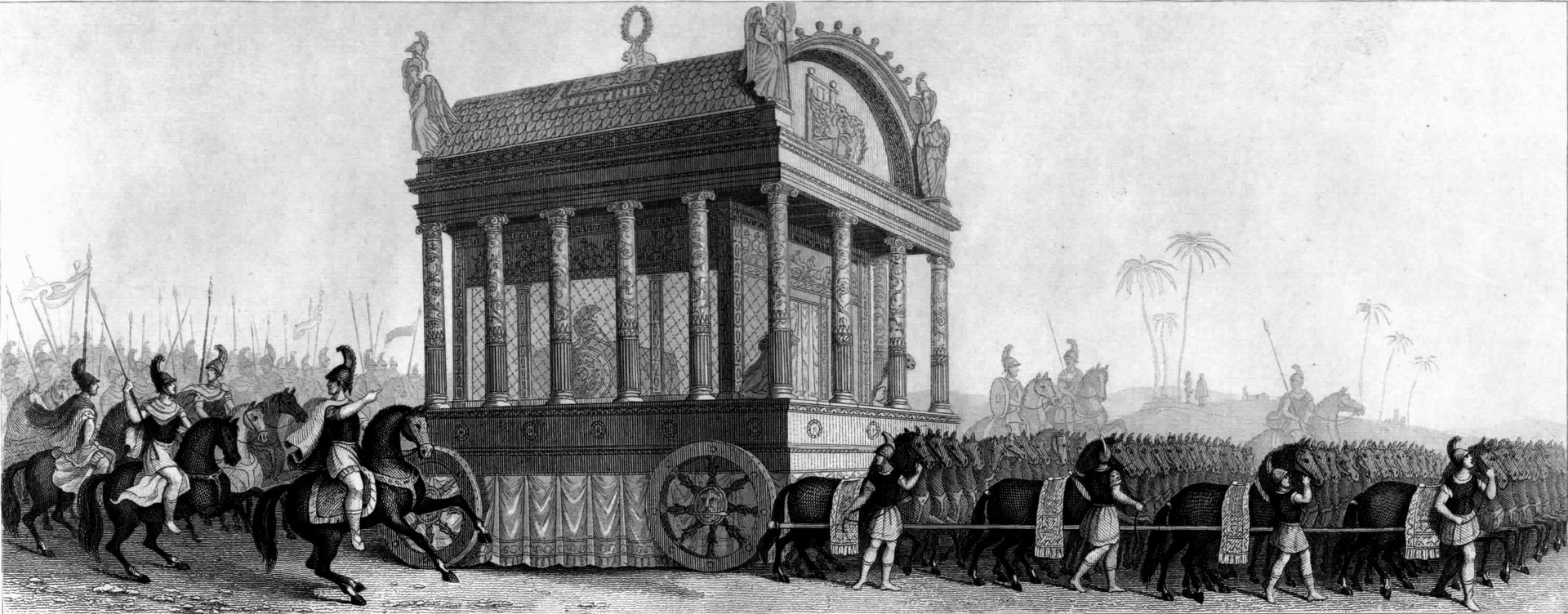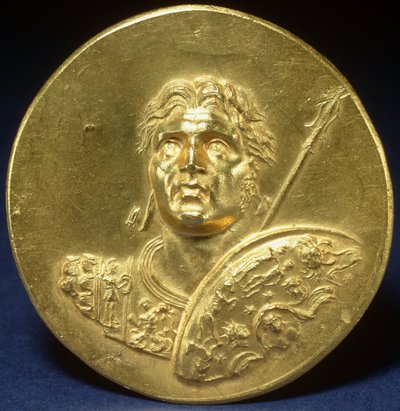Who is…
Alexander the Great
Alexander is the most famous king of Macedonia and a major conqueror in the ancient world.
Alexander succeeded his father Philip. It is said that he never lost a battle, despite usually being outnumbered. He died at the age of 32 in 323 BC. His empire was then divided among his four generals.
In the Book of Daniel
He is probably represented by the “belly of brass” in the dream interpreted by the prophet Daniel…
Thou, O king, sawest, and behold a great image. This great image, whose brightness was excellent, stood before thee; and the form thereof was terrible. This image’s head was of fine gold, his breast and his arms of silver, his belly and his thighs of brass, his legs of iron, his feet part of iron and part of clay.
Thou sawest till that a stone was cut out without hands, which smote the image upon his feet that were of iron and clay, and brake them to pieces… like the chaff of the summer threshingfloors; and the wind carried them away, that no place was found for them: and the stone that smote the image became a great mountain, and filled the whole earth. This is the dream; and we will tell the interpretation thereof before the king.
Thou, O king, art a king of kings: for the God of heaven hath given thee a kingdom, power, and strength, and glory. And wheresoever the children of men dwell, the beasts of the field and the fowls of the heaven hath he given into thine hand, and hath made thee ruler over them all. Thou art this head of gold. And after thee shall arise another kingdom inferior to thee, and another third kingdom of brass, which shall bear rule over all the earth.
…And in the days of these kings shall the God of heaven set up a kingdom, which shall never be destroyed: and the kingdom shall not be left to other people, but it shall break in pieces and consume all these kingdoms, and it shall stand for ever.
Gold medallion circa 215-243 AD (Imperial Roman) depicting Alexander the Great — This is part of a hoard discovered in Egypt. The medallion shows Alexander with his hair pulled back bearing a shield decorated with signs of the zodiac. He wears a decorated cuirass with a figure of Athena on the shoulder strap and, on the chest, a scene from the Gigantomachy (War of the Giants). The back depicts Alexander and Nike, false goddess of victory, riding in a chariot, flanked by the false gods Roma and Mars.…the great God hath made known to the king what shall come to pass hereafter: and the dream is certain, and the interpretation thereof sure. —Dan. 2:31-45 KJV excerpts
In Daniel’s later vision, Alexander is also probably the king represented by the leopard-like beast (Daniel 7) and the he-goat (Daniel 8).
More information
- Alexanders mentioned in the Bible
- What is Macedonia?
- What and where is Alexandria?
- About the kings in the Bible
- About the Book of Daniel in the Bible
- Men of the Bible

